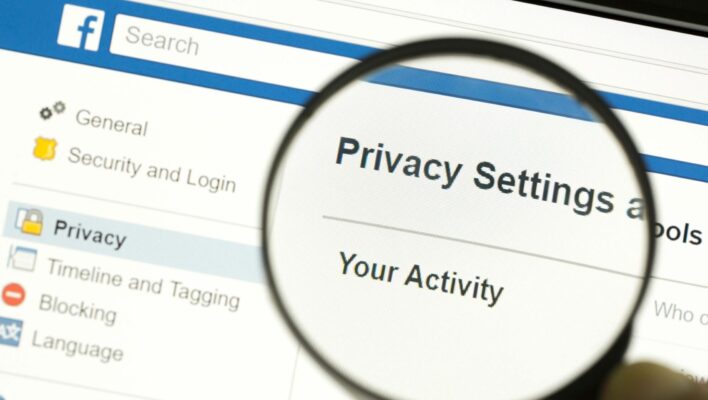Mastering Digital Boundaries: A Comprehensive Guide to Adjusting Your Privacy Settings in Facebook

Introduction:
In the intricate tapestry of social media, where connections are forged, and information is shared at the speed of a click, the importance of privacy cannot be overstated. Facebook, as a global social networking giant, provides users with a myriad of tools and features to tailor their privacy settings. This extensive guide aims to delve deep into the nuances of Facebook’s privacy settings, empowering users to take control of their online presence, safeguard personal information, and navigate the digital landscape with confidence.
Chapter 1: Navigating to Your Privacy Settings
- Accessing the Settings Menu: Begin by logging into your Facebook account and locating the small arrow in the top-right corner of the screen. Click on it to reveal a dropdown menu, and then select “Settings & Privacy” and finally “Settings.” This will lead you to the central hub for all your Facebook settings.
- Privacy Shortcuts: Alternatively, for a quick route to essential privacy features, use the “Privacy Shortcuts” located in the top-right corner of your Facebook homepage. This provides direct access to tools like changing your password, enabling two-factor authentication, and managing your privacy settings.
Chapter 2: Customizing Your Profile Privacy
- Adjusting Post Visibility: In the “Settings” menu, navigate to the “Privacy” tab on the left. Here, you’ll find the “Your Activity” section, allowing you to control who can see your future posts. Choose from options like “Public,” “Friends,” or “Only Me” based on your desired level of visibility.
- Timeline and Tagging Controls: Fine-tune who can post on your timeline and who can tag you in posts. Explore settings related to reviewing tags before they appear on your timeline, giving you control over the content associated with your profile.
Chapter 3: Managing Your Friends List
- Friend Request Settings: Under the “Privacy” tab, explore “How People Can Find and Contact You.” Adjust settings related to friend requests, ensuring you receive requests only from people you know or allowing broader connectivity.
- Restricted List and Friend Lists: Utilize the “Restricted List” to limit what certain friends can see on your profile without unfriending them. Additionally, create custom friend lists to categorize your connections and control the audience for specific posts.
Chapter 4: Controlling App and Post Visibility
- Apps and Websites: Facebook integrates with various third-party apps and websites. Manage these connections under “Apps and Websites” to control the information these apps can access and ensure your privacy remains intact.
- Public Profile Information: Customize what information is visible on your public profile. Adjust settings for bio information, posts, and friend list visibility to strike the right balance between sharing and safeguarding your personal details.
Chapter 5: Tailoring Audience Selection for Posts
- Audience Selector Tool: Leverage the audience selector tool when creating a post to choose who sees it. This granular control allows you to share content with specific friends, custom friend lists, or even make posts public for a broader audience.
- Default Post Settings: Set default audience preferences for your posts under the “Your Activity” section. This ensures that your posts consistently align with your desired level of visibility without requiring manual adjustments each time.
Chapter 6: Enhancing Security Measures
- Two-Factor Authentication: Strengthen your account security by enabling two-factor authentication. This additional layer of protection ensures that even if your password is compromised, unauthorized access remains unlikely.
- Login Alerts and Recognized Devices: Regularly review login alerts and recognized devices in the “Security and Login” section. This allows you to monitor and manage access to your account, identifying any suspicious activity promptly.
Chapter 7: Understanding Targeted Advertising
- Ad Preferences: Navigate to “Ad Preferences” to manage your ad settings. Control the information Facebook uses for ad targeting and adjust preferences related to the ads you see, ensuring a personalized yet privacy-conscious advertising experience.
- Clearing Ad History: Clear your ad history to reset the data Facebook uses for targeted advertising. This feature empowers you to maintain control over the information used to tailor the ads you encounter on the platform.
Chapter 8: Additional Privacy Considerations
- Location and Facial Recognition: Explore settings related to location services and facial recognition. Adjust preferences for location tagging in posts and control whether Facebook can recognize you in photos and videos.
- Reviewing Your Activity Log: The Activity Log is a comprehensive record of your interactions on Facebook. Regularly review this log to ensure that your posts, comments, and other activities align with your privacy preferences.
Conclusion:
In conclusion, adjusting your privacy settings in Facebook is not a one-time task; it’s an ongoing process of fine-tuning your digital boundaries. By mastering the tools and features outlined in this comprehensive guide, you empower yourself to curate a digital experience that aligns with your preferences and values.
As the digital landscape evolves, so too will Facebook’s privacy features. Stay informed about updates, regularly review your settings, and embrace the power of customization to create a social media experience that prioritizes your privacy. Navigating the digital realm becomes more empowering when you understand the intricacies of your privacy settings on Facebook, allowing you to connect with others while safeguarding the sanctity of your personal information.




